-
American Goldfinch (0)
-
American Robin (0)
-
Baltimore Oriole (0)
-
Blue Jay (0)
-
Bluebirds (1)
-
Carolina Wren (0)
-
Chickadee (0)
-
Ducks (0)
-
Starling and House Sparrow (0)
-
House Finch (0)
-
House Wren (0)
-
Hummingbirds (5)
-
Northern Cardinal (1)
-
Northern Mockingbird (0)
-
Nuthatch (0)
-
Owls (3)
-
Tufted Titmouse (0)
-
Woodpeckers (0)
Suet Feeder Tips for Backyard Birding
A great addition to any variety of bird feeders is the suet feeder.
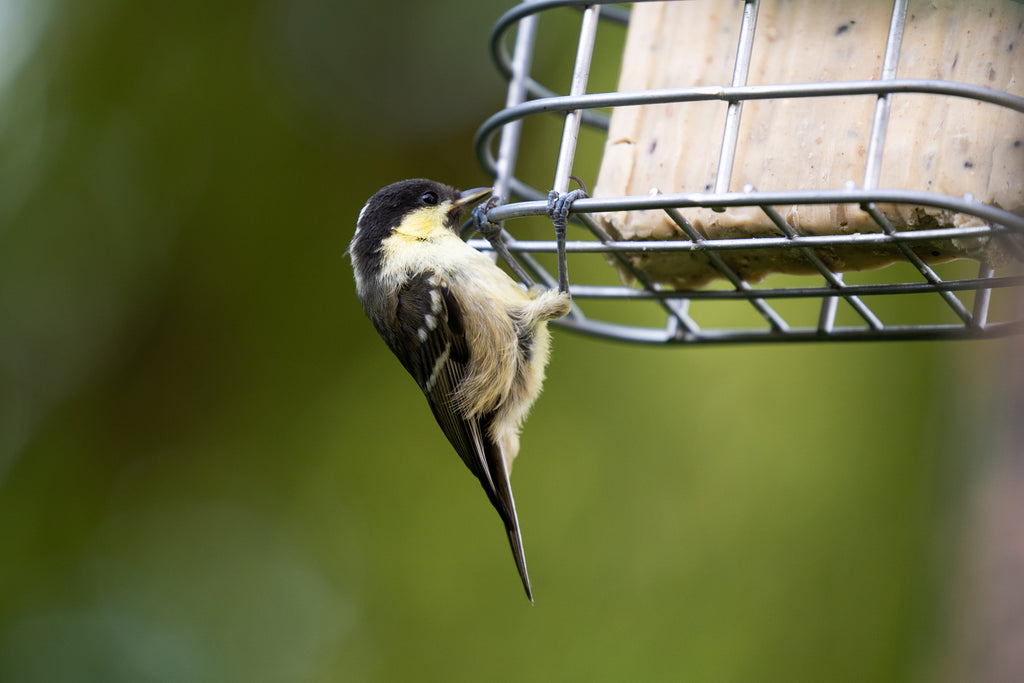
Used heavily in the fall, winter, and early spring, suet feeders provide a source of high energy fats for birds.
Suet feeders are not only used in winter. However, it can be difficult to choose the right type of suet for summer. Suet can warm up and go rancid quickly. This is because of its nature and any add-ins to make it more appealing to birds.
Let’s look at what suet is actually made. This will help you better understand its uses and how to store and set out suet for the best results.
Suet is a type of saturated hard fat from beef, lamb, or mutton. It is a high calorie option that birds can easily digest for quick energy. The more raw the suet is the quicker it can grow rancid when exposed to any heat.
When it is rendered, impurities are removed. It becomes more shelf stable but can still grow soft or "melty" in warmer temperatures. This is why suet is most commonly used in cooler weather.
Tip #1 Prevent Suet From Spoiling
To prevent suet from spoiling quickly, place suet feeders in shadier spots that avoid direct sunlight. Refresh your suet regularly.
Birds avoiding your suet feeders can be a sign that the weather has affected the suet. That means it's time to replace the suet.
When you're not using your suet, store it in a cool, dry location. This will help to keep suet in good condition and allow you to keep more on hand at home. Suet can also be put in the freezer to help it stay fresher for longer.
Tip #2 Deciding What Type of Suet To Purchase
Suet is available in a variety of recipes and ingredients, shapes and sizes adding more options to your backyard birds menu.
Suet is a big hit for many birds. Woodpeckers, nuthatches, chickadees, jays, flickers and starlings are often seen at suet feeders.
Don’t panic at that last one. We will offer ways to stop bully birds from accessing your suet. This will prevent them from scaring away other birds in your yard.
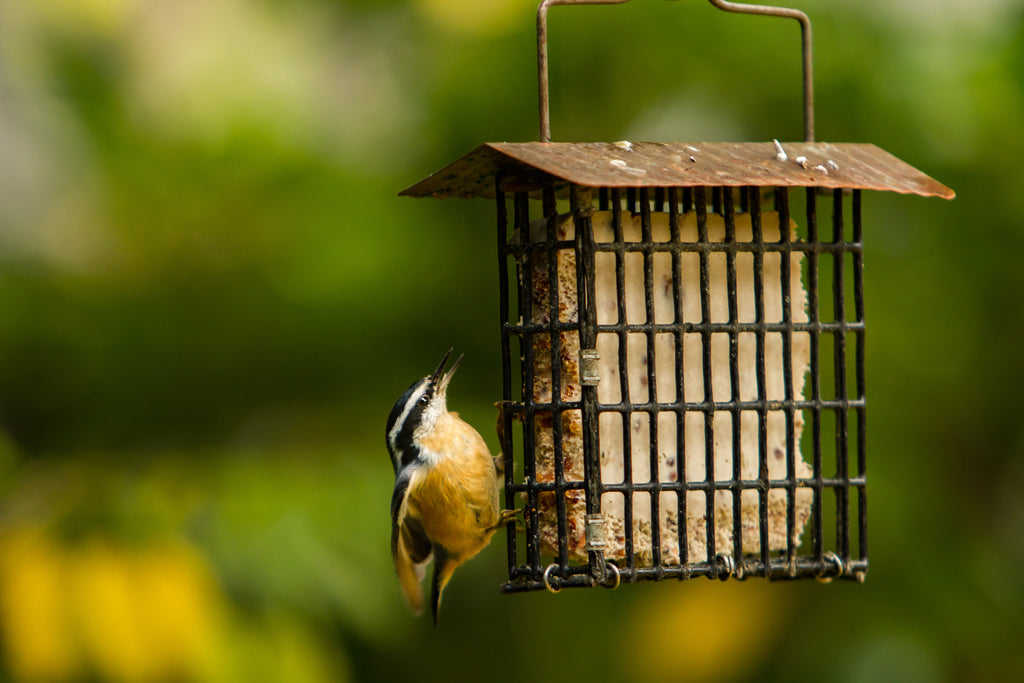
Some less frequent visitors will be wrens, warblers, goldfinches, and cardinals. As mentioned above, the type of bird that comes can also be determined by the style of feeder as well.
When feeding suet, keep in mind what birds you will attract and what you want to attract.
Bird seed and suet companies provide a variety of options to cater to the dietary needs of numerous songbirds. Doing some research on different birds and what they like can help increase chances of attracting them to the feeders.
Providing suet with diverse fruits, nuts, or mealworms can attract birds to suet feeders. This offers them added nutritional advantages and the enjoyment of extra treats.
Most people are familiar with cakes made with suet. Suet can also be formed into logs, called plugs. It can also come in big or small balls, or small pieces called pellets.
There are novelty shapes that can be found throughout the year for holidays. The suet can be sold as a "butter" if it has a softer consistency. This "butter" can be spread on a tree for birds to pick at.
Tip #3 Suet During Warm Months
When looking to provide suet in the warmer months, keep in mind that it will be softer and can often melt.
To avoid this, many birders use brands of suet that carry a “No-Melt” or “Never Melt” option. Pine Tree Farms carries a large selection of “Never Melt” brands that are available in cakes and their Log Jammers.
"No-Melt" suets typically contain specialized blends. These blends lower the fat content and have more add-ins. This helps the suet retain its shape in warmer weather. Pine Tree Farms “Never Melt” brands are advertised as will not crumble and can withstand temperatures of over 120 degrees Fahrenheit.
Tip #4 Selecting The Right Suet Feeder
Offering suet does not have to be a free-for-all. Bird feeds often provide different types of seed, nuts, or fruit. Suet feeders also come in a variety of shapes and sizes.
The most popular styles of suet feeders include Suet Cages, Suet Logs, and Open Tray Feeders.
Suet cages are the most common type of feeder as there are so many styles of cage feeder for different needs. Cage feeders can be simple or very ornate and can even be made squirrel proof and bully bird proof.
If the main goal is just to feed the birds, there is no need to go wild. For birding beginners, a simple cage feeder is perfect. The JCs Wildlife Single Suet Feeder Cage and Double Suet Feeder Cage are great options.
Different Feeders for Different Situations
Almost all suet cages are made from a coated wire. They can be suspended from trees, attached to hopper-style feeders such as the JCs Wildlife Double Fly Thru Bird Feeder, or hung from feeder pole systems like the Squirrel Stopper Sequoia.
To help shield suet cages from adverse weather some feeders include roofs like JCs Wildlife Single Suet Cage with Poly Lumber Roof, the Metal House Double Suet Cage, or the Fleur de Lis Suet Feeder.
Looking for suet feeders that will roll out the welcome wagon for woodpeckers? Look no further!
Many woodpeckers enjoy suet feeders for some of the larger species, it helps to have support when eating. Which is where the Tail Prop Suet Feeder comes in handy.
The JCs Wildlife Suet Feeder with tail prop helps larger suet feeding birds to balance while eating. It comes in three sizes: Single, which can hold one standard size cake. Double, which can hold two standard size cakes. Triple Suet, which can hold three standard size cakes.
This style of feeder is especially favored by Pileated Woodpeckers as they are the largest woodpecker known in the US.

Check out the Squirrel Stopper Round Squirrel Proof Suet Feeder to deter squirrels and bully birds from feeders. It comes in two sizes.
One that can hold two suet cakes and the larger size can hold four suet cakes. Another option is from another great brand Brome. The Squirrel Buster Suet Bird Feeder 1106 is designed to keep squirrels at bay.
If squirrels aren’t wreaking havoc on your feeders but the suet feeders are seeing less frequent visits from backyard songbirds you may be dealing with bully birds such as starlings and grackles.
Hanging suet feeders may be the best option. For example, the Recycled Poly Upside Down Single can fit two standard size cakes. The Upside Down Double suet feeder can fit four standard size cakes.
Many bully birds do not enjoy getting their food by hanging upside down. On the other hand, songbirds and woodpeckers are quite content to cling and feed while suspended upside down.
It can make for quite an entertaining afternoon for many birdwatchers. While it won’t completely stop starlings, it can decrease how much suet they are cleaning out of the feeder.
Another great way to deter squirrels is to use Hot Pepper Suet. This type of suet can be used in a variety of feeders. Squirrel-proof and resistant feeders, regular cage feeders, log feeders, and open trays are all suitable.
Hot Pepper Suet can contain many different spicy ingredients that don’t deter birds but squirrels do not like. Peppers that can be included are hot pepper flakes, jalapeno oil or liquid habanero.
We advise handling these items with care. If gloves are not used, wash your hands afterwards to avoid contact with your face and eyes. These items are very hot!
Suet Logs are another way to provide suet to birds.
These can be store bought, like the Pine Tree Farms Log Jammer Suet Plug Feeder. If DIY projects are more of your style, this is an easy one to start off with.
Suet Logs are small pieces of timber or wood that have holes drilled into them. To create the holes, use a spade drill bit. It is best to think about the size of the suet “plug” before drilling.
The hole must be drilled to the right size. Otherwise, the suet may not fit, or birds may knock it out.
Log feeders usually have an eyelet screw at the top. This enables a string to be attached, allowing the feeder to be hung from a pole or shepherd's hook.
Some have bark or an unfinished look to them to provide better grooves for birds to cling to. Helping to make it a fun way to feed the birds.
A lower maintenance option for suet is leaving it in an open tray.
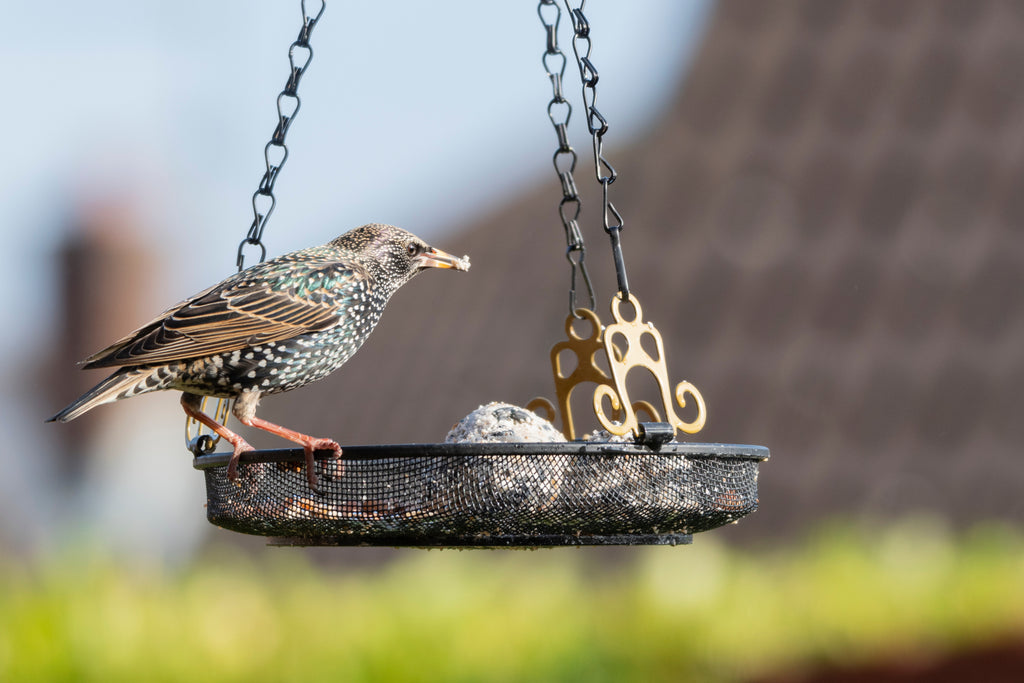
This can be used for whole suet cakes or if there are small pieces leftover and you are looking to refresh your suet, leftovers don’t go to waste here.
By offering suet in a tray feeder, sometimes called a platform feeder, birds that normally would never use a regular suet feeder may be intrigued to try this tasty treat. Open tray feeders can be beneficial for attracting new birds. Some birds can be skittish around feeders that are more enclosed. Providing them with an open tray feeder can help them feel more at ease.
Suet does not need to be the only food in an open tray feeder. It works better when it is chopped or crumbled into smaller pieces and combined with other bird seed. By adding suet to regularly used bird seed mixes this can help to increase interest in the suet and encourage more birds to try it.
No comments
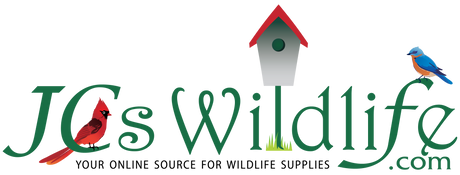
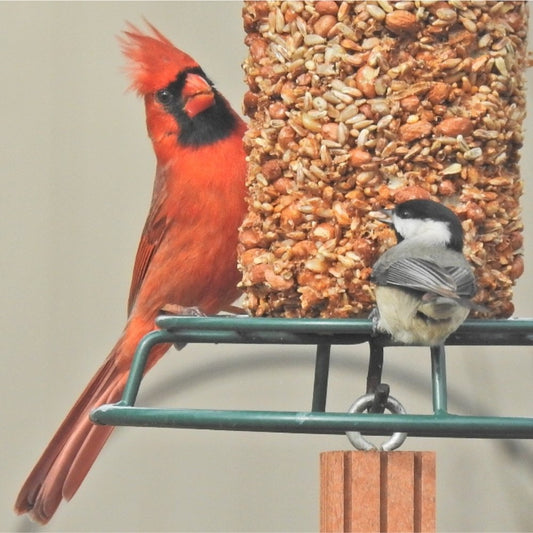
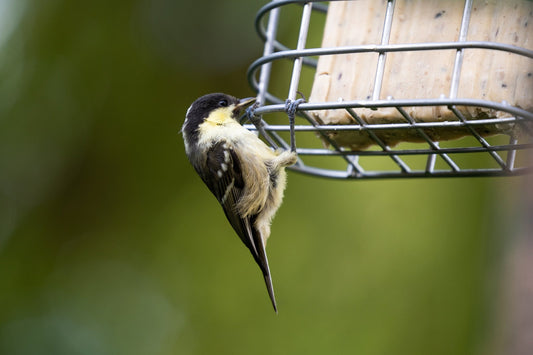
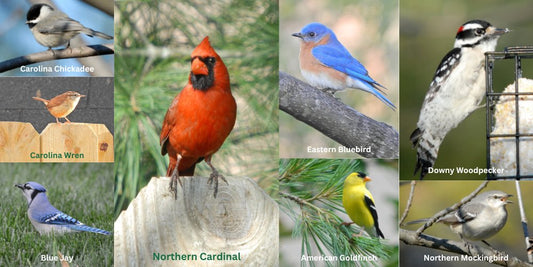
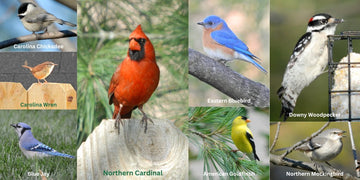
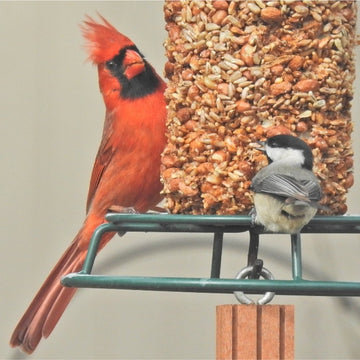

0 comments